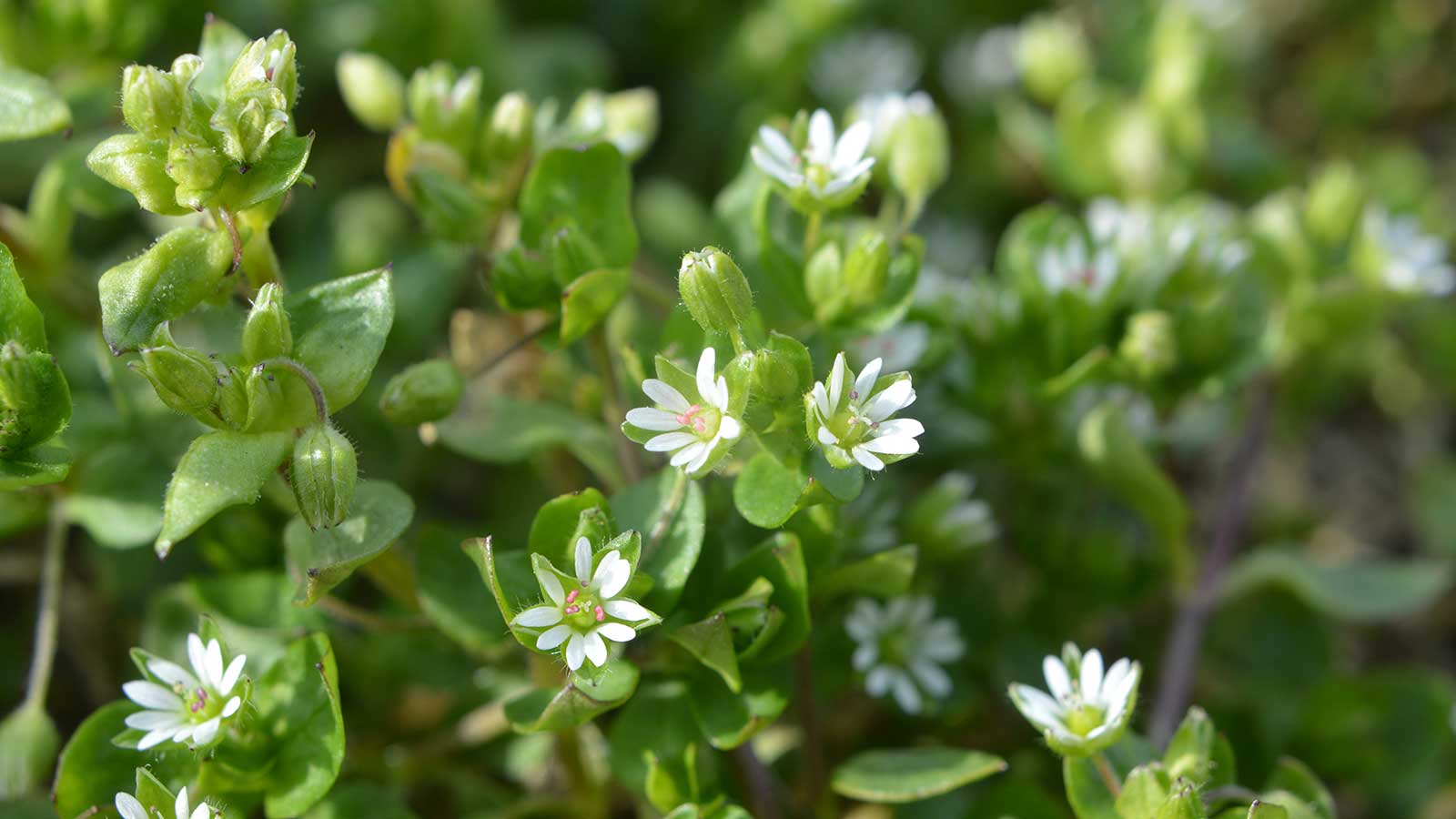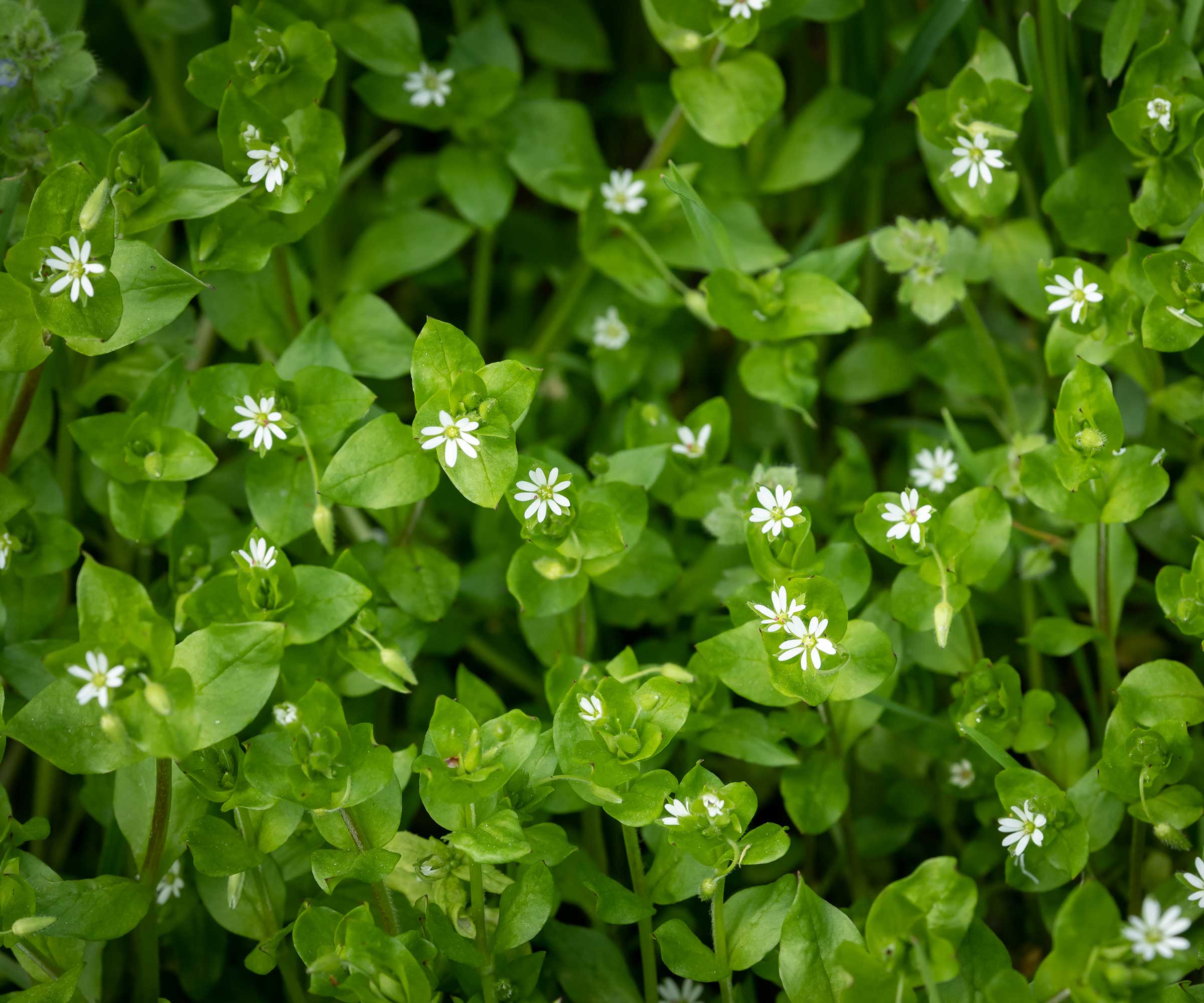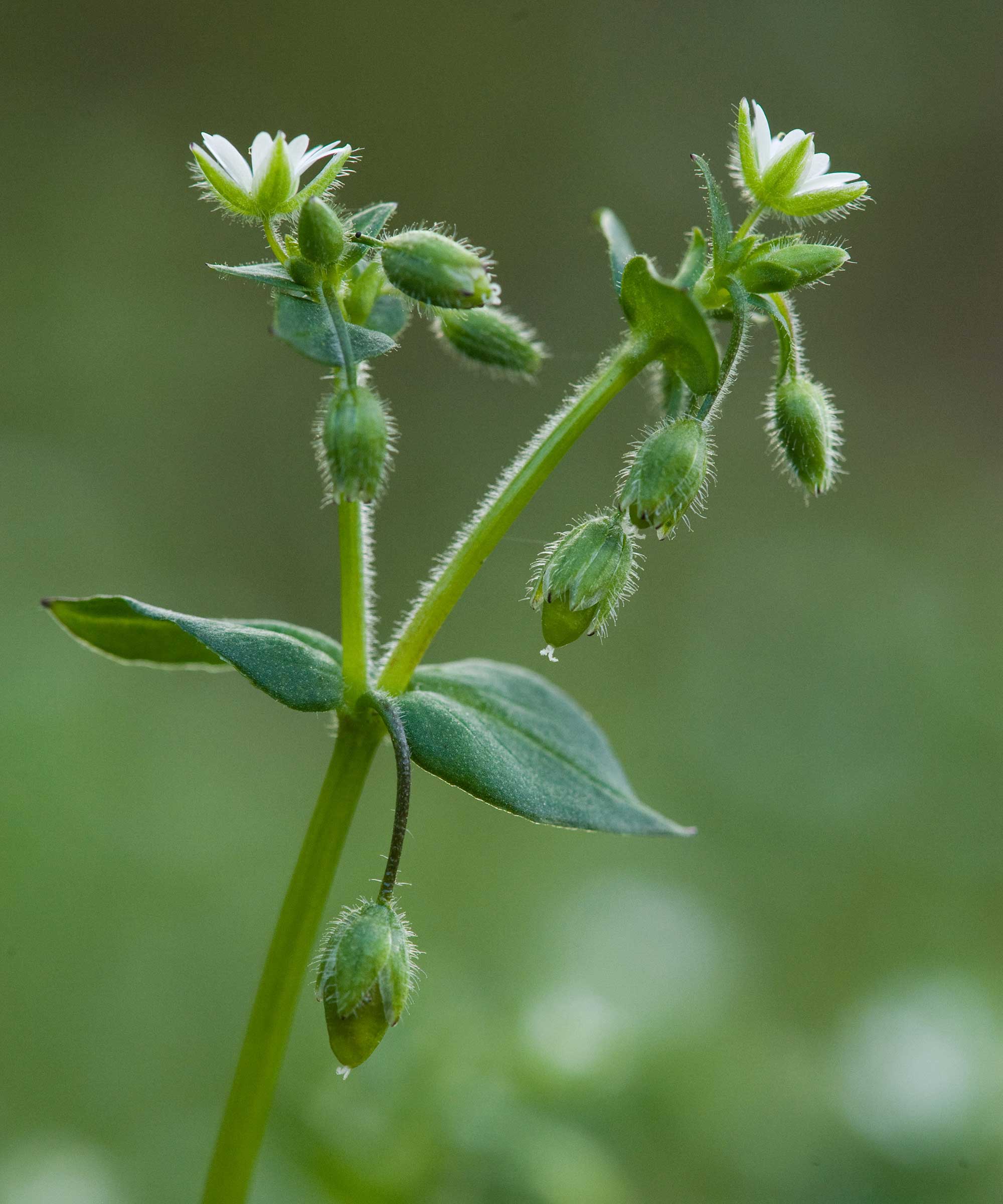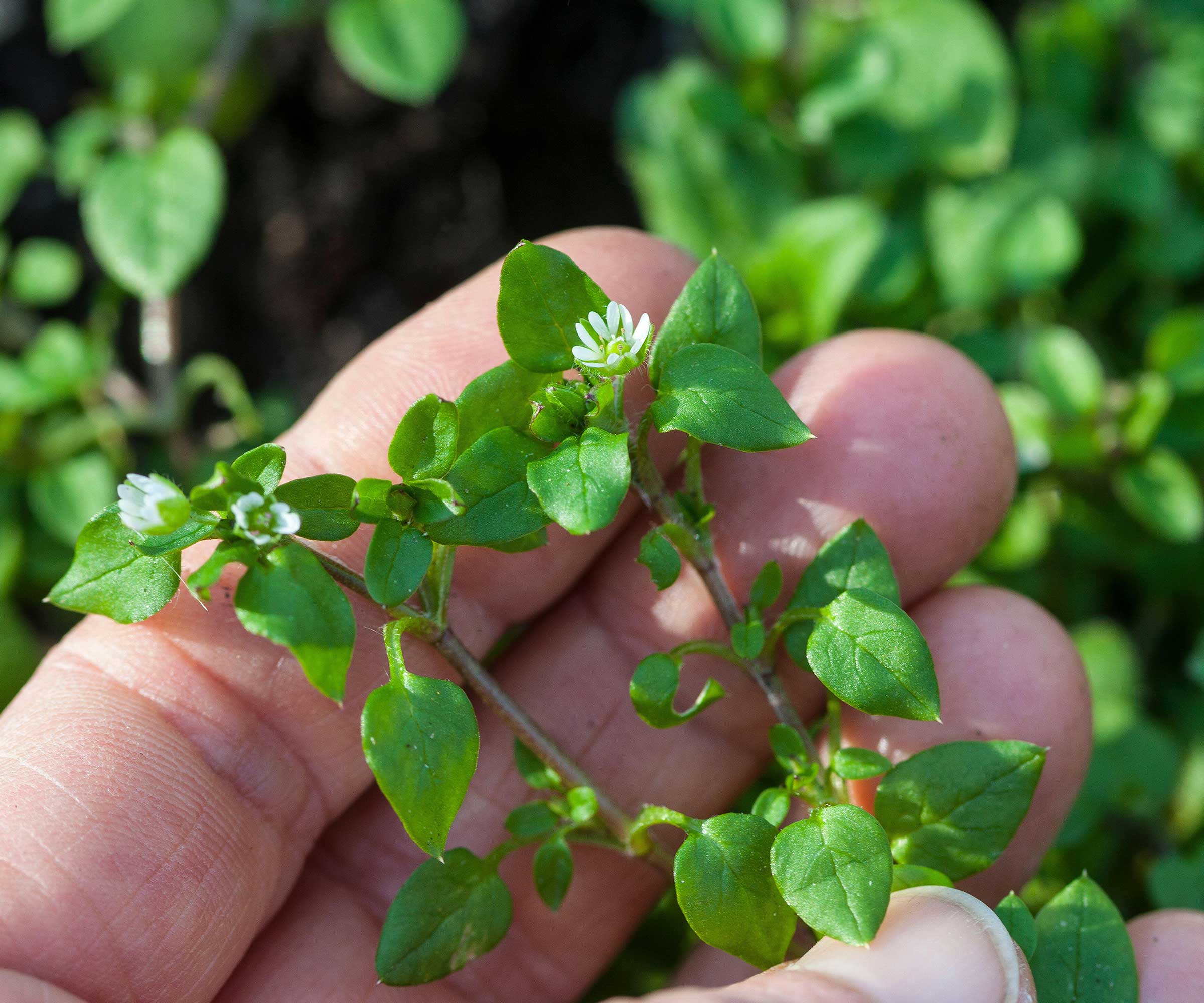
Q: I have an ongoing issue with common chickweed in my backyard – and this year it's spread from my flower beds to the vegetable patch nearby. What can I do to get rid of it for good?
A: Chickweed (Stellaria media) is a common weed with white, very short-lived flowers. Although annoying, it's one of the easier interlopers to deal with, as you may be pleased to hear. It's an annual with no stubborn roots to dig up – unlike dandelions. However, it completes numerous life cycles within one growing year, as Lucy Chamberlain, a fruit-and-veg-growing expert reveals. During this time, it produces a huge amount of seeds, which means it spreads rapidly. 'It’s also relatively hardy,' she adds.
There are ways to tackle it, though – as this guide explains – just try to take action as soon as possible to stop it from getting out of hand.
3 ways to deal with chickweed in your flower and veg beds
Take control of your chickweed infestation with these tips.
1. Remove chickweed by hand
True, getting rid of weeds by hand requires a bit of time and effort, but if you use a 'little and often' approach, it won't feel so overwhelming. Plus, it's much better for wildlife and the surrounding plants than using herbicides.
A garden hoe, such as Spear & Jackson's Stainless Steel Dutch Hoe from Amazon, is perfect for slicing through annuals such as these, but ensure you do so before the plants have produced seed. That way, you won't accidentally spread more seeds around as you cut them down, and the young, leafy growth can be disposed of on the compost heap.

2. Cover the weeds up
Layering a heavy layer of mulch over these weeds can be enough to kill any young seedlings and stop seeds from germinating.
The Royal Horticultural Society recommends using opaque plastic sheeting to smother them – try this ECOgardener Premium 5oz Weed Barrier Landscape Fabric from Amazon. You can then cover the top with compost or bark chippings to improve the aesthetics.
A layer of organic matter by itself can also help to suppress milder cases, but ensure it's at least 3in thick, as they advise.

3. Embrace it as an edible
You don't have to remove all the common chickweed in your plot – some gardeners choose to embrace it for its edible qualities.
'The soft, buttery texture of chickweed means it can be eaten both raw and cooked,' says Lucy Chamberlain. 'Indeed, the best way to eat it is as a salad leaf because, once cooked, it wilts down to almost nothing in the same way that spinach does.
'To harvest plants, cut off all palatable growth using scissors. Gently wash to remove traces of soil and snip into biteable chunks. The flavor is mild, so use it as a bulking agent for more peppery leaves such as watercress and chicory,' Lucy continues. Ensure you only harvest plants from areas where pesticides and herbicides have not been used. 'If ever you needed an excuse not to weed your plot too thoroughly, here it is!' she says.
Not only this, but chickweed seeds are also a good source of food for wildlife, including birds and insects, so allowing some to remain in your plot can help make it more wildlife-friendly.

FAQs
Can you use herbicides to get rid of chickweed?
If you need a quick fix to clear a large area of chickweed that's smothering otherwise bare ground, then herbicides can be used. Be sure to follow the packet instructions carefully. Use caution with non-selective types to ensure you kill just the weeds and not your nearby plants – and install temporary covers if necessary.
How do you get rid of chickweed in lawns?
Ortho's Weed B-gon Chickweed, Clover & Oxalis Killer for Lawns Concentrate, available on Amazon, is a well-rated option for tackling this weed in certain types of turf, and if used correctly, shouldn't harm the surrounding grass. Alternatively, dig it up by hand and fill in the resulting bare patches with fresh compost and grass seed afterward.
Remember that a good lawn maintenance routine, including the likes of scarifying, aerating, and fertilizing, can help to keep lawn weeds at bay.
Is there a perennial type of chickweed?
Yes, common chickweed is not to be confused with mouse-eared chickweed (Cerastium vulgatum). This is a different, perennial plant, and has slightly smaller leaves with a fuzzy texture. It can be tackled by hand-weeding or applying a herbicide, but it can be trickier to get rid of as it can re-grow from small fragments of the roots. This means that a more thorough approach when hand weeding is needed, with a garden trowel.
As with most weeds, common chickweed can be dealt with effectively with a little patience and perseverance. Or enjoyed in a salad – the choice is yours!







